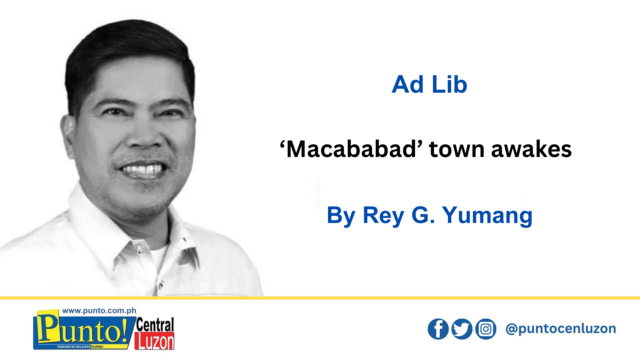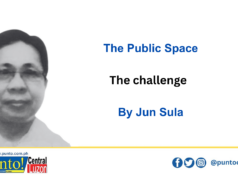FOR AS long as I can remember, we Macabebe folks have been used to leaning on humor to cope with the annual flooding. To a fault, we have romanticized resiliency in facing relentless flooding in the town.
Proof? We have even started to name our beloved town as “Macababad” and tried to outdo each other by coming up with the wittiest memes – “Gumato ka, Macabebe!” “Albug ka mu, taga Macabebe kami!” “Ali ka taga Macabebe nung ala aka pang kaliskis at hasang ngeni!” – just to name a few that trended on social media.
But things are changing slowly though steadily. Last June, floods from high tide affected seven barangays, displaced thousands and disrupted livelihoods. To think this was not even the results of a typhoon. This situation must have awakened a long-dormant sentiment in the hearts of my town mates that instead of taking everything in stride, the usual barrage of jest was replaced by a collective demand for accountability.
Once again, the townsfolk reminded the local and national government leaders that road elevations and makeshift embankments have offered temporary relief only, allowing flooded sections to swap places each year. In fact, the long stretch of the main road in San Gabriel has been flooded in less than two years since it was elevated again.
Residents now openly urge local and national authorities to stop delivering mere Band-Aid fixes. Their message has never been crystal-clear – “We want concrete actions, transparent budgets, long-term plans.”
The urgency is clear. Pampanga River Basin—of which Macabebe is a low-lying part—sees at least one major flood annually. Back in 2009, 2012, 2019, 2023, and 2025 the town was inundated for weeks. In September 2019 alone, nearly all 25 barangays suffered, affecting 30,000 people and requiring P433 million for infrastructure repair (pna.gov.ph).
But let us give credit to where it is due. The government authorities have responded by initiating the Integrated Disaster Risk Reduction and Climate Change Adaptation (IDRR-CCA) Project Stage 1 in August 2024. This was financed by a ₱7.6-billion loan from South Korea’s ExIm–EDCF. This effort aimed to reduce flood durations from 66 days per year to just 17 days in Macabebe and neighboring towns.
Punto CL also reported that San Miguel’s “Better Rivers PH” dredged 26 km of the lower Pampanga River last year, removing nearly 700,000 tons of silt. This deepening, combined with using dredged material to reinforce dikes and elevate roads, has noticeably improved flood drainage.
I tried to look for sound solutions and found a short list based on best practices and climate models.
On top is a comprehensive watershed management. The dredging must be extended to upper tributaries. In 2024, SMC cleared 4.3 million MT of silt across 74.5 km, yet only 26 km was in Pampanga. Expanding clean-up upstream would reduce silt loads downstream.
Second, we need to invest on smart infrastructure investment. We can prioritize hydraulic modelling to identify pinch-points. We can build redundant flood ways, reservoirs, and pump systems in critical barangays like San Gabriel.
Trite as it may sound, the third is to implement nature-based solutions consistently and rigorously. We must continue to reforest upland areas to improve infiltration. We must restore wetlands and mangrove buffers along the delta to absorb tidal surges before reaching inland.
Since we are talking about long-term government projects, we should foster a culture of transparency, accountability and active planning. Flood control efforts must be accompanied by publicly accessible budgets, regular progress reports, and third-party audits – if only to remind us of the horror stories of collapsed or under-built embankments in nearby towns.
The Macabebe town folks no longer want to be mere spectators but active and empowered partners in community resilience. They are now rising as advocates demanding that concerned government agencies deliver enduring safety, and not just seasonal relief. They have realized that resilient humor will never be a substitute for responsible and responsive governance. It’s time for long term policies and investments to match their communal spirit and courage.





